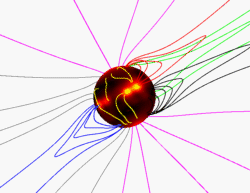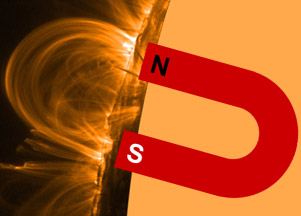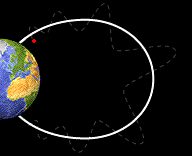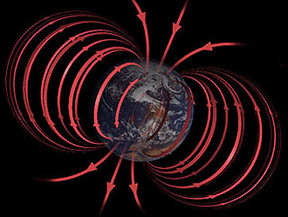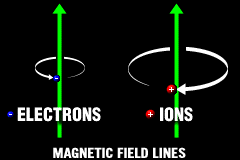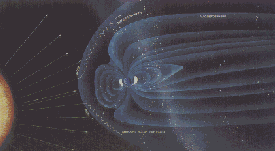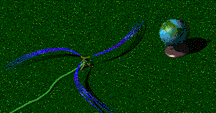Click on image for full size
Related links:
The Magnetic Field
The force of magnetism causes material to point along the direction the magnetic force points. As shown in the diagram to the left, the force of magnetism is illustrated by lines, which represent the force. In this diagram, the force points from the positive pole to the negative pole of the magnet. As shown in the diagram, if one side of the magnet is called the positive side, and the other side called the negative side, the force of magnetism flows from the positive side or pole, to the other pole. Here's another picture of how this works.
The force of magnetism forces small pieces of iron to line up in the direction the magnetic force points. A compass, in which a sliver of magnetic material can swing freely, is thus forced to point toward the positive pole.
On Earth, the north (positive) pole of the Earth's magnet is in fact at its South geographic pole. A compass needle sure enough indicates North, but if you put a compass needle near a bar magnet, it points AWAY from the north (positve) pole of the bar magnet. This picture shows where the poles are actually found, and also shows that the poles drift over the surface of the Earth over time.
The force of magnetism coming from the magnet is called the "magnetic field", and is illustrated by lines. The magnetic field is strongest where the lines of force come together (and turn red), and is weakest when the lines of force are far apart (and turn blue).







